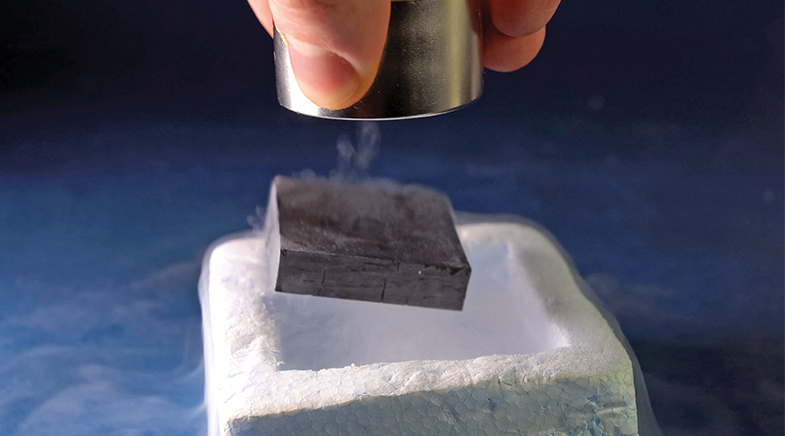Fasten your seat belts!
-
- from Shaastra :: vol 03 issue 08 :: Sep 2024

A series of flight mishaps in recent times has rekindled interest in clear-air turbulence.
Nandan Kumar Sinha started studying flight dynamics early during his PhD at the Indian Institute of Technology (IIT) Bombay. He was trying to understand aircraft behaviour during safe and unsafe conditions, periods when an aircraft is stable or unstable. An extension of such work was to figure out ways to bring an aircraft back to stability when it moved beyond safe conditions, using a combination of controls. It was Sinha’s first experience in designing aircraft control systems. Research like this had been hampered till then due to a lack of data, but a bright spot had appeared just as he started his PhD.
In the 1990s, the National Aeronautics and Space Administration (NASA) released wind tunnel data for the F-18 High Alpha Research Vehicle. Many complex manoeuvres were captured in the data, including strategies to stabilise an aircraft when it spun out of control. This data stimulated research on this aircraft around the world, including situations such as the high angle of attack of the aircraft wings against the wind. A high angle of attack increases lift but can cause the aircraft to stall when it goes too high. On rare occasions, when the aircraft wing oscillates too much during heavy turbulence, the angle of attack can exceed safe limits.
Sinha didn’t know many researchers who were working in the area at that time. “It is a niche in that sense even today,” he says. “The theory and techniques that we learn could be applied in other areas as well but in a more unconventional way, which makes it hard to sell.” However, a series of recent flight incidents due to clear-air turbulence, which happens during fine weather and without any warning, has put the focus on this field of research. On May 21, 2024, a Singapore Airlines flight bobbed violently, severely injuring many, and triggering a heart attack that killed one passenger. Although there were storms in the area, clear-air turbulence may have caused this accident. On July 1, 2024, an Air Europa aircraft flying from Madrid to Montevideo hit clear-air turbulence, injuring 40 passengers, one of whom was stuck on the roof of the plane.
TESTING TIMES
Since clear-air turbulence is rare, the design of aircraft is not altered to deal with it. However, several design elements go into testing specific parts of a plane that are prone to changing loads due to gusts of wind during a flight, says Amit Kumar Khatri, a scientist at the Council of Scientific & Industrial Research-led National Aerospace Laboratories in Bengaluru. These include the parts that generate lift — such as the horizontal tail, which provides stability, and the vertical tail, which gives directional stability. Using mathematical models, designers simulate an aeroplane getting into a gust of wind. “We can estimate with a good degree of confidence what the load on these parts will be,” Khatri says. The aircraft is designed to tolerate the loads. The U.S. Federal Aviation Administration Regulations specify what sort of gusts must be studied when designing an aircraft. These regulations offer clear guidelines, and these have evolved as an industry practice.
Research on aircraft design and simulations can guide algorithms used in control systems, not just for turbulence but for any unexpected problems.
Sinha, now a Professor at IIT Madras, specialises in research on aircraft design and simulations that can guide the development of algorithms that are used in control systems, not just for turbulence but for any unexpected problems. This can be, for example, the deposition of ice on the aircraft, which changes its shape and affects the aerodynamics. To fly in such conditions, there are many control systems in place. “We need good mathematical models so that we can build better control algorithms,” Sinha says. Clear-air turbulence can be modelled, and pilots are confident of handling it. “But if, on one day, there is a large variation, that is a random event – like an earthquake.”
The angle of attack is an important factor in aircraft stability. If the angle of attack is less than a critical value called the stall angle of attack, the aircraft undergoes lift. Beyond the stall angle of attack, it experiences reduced lift. If wind pushes the plane beyond the stall angle of attack, the aircraft experiences loss of lift and starts descending. For slight variations, control systems are designed to handle the change. Large variations, on the other hand, are “not even studied properly”, Sinha says. “Only if you study it can you think of designing an algorithm to tackle it.”
PREDICTING UPHEAVALS
Tackling turbulence usually means avoiding it. Clear-air turbulence is difficult to predict precisely, though aviators may know its probability. If the probability is high, an airline may avoid a specific route. Since visual cues are not easily available, pilots also depend on calls given out by other aviators in the vicinity who have encountered clear-air turbulence. Some aircraft are fitted with turbulence detection systems such as LIDAR (Light Detection and Ranging), which give some information in advance. But these are heavy and only present in some aircraft.
There are three main causes for clear-air turbulence, according to current understanding. A major characteristic of clear-air turbulence is shear, a twisting force that occurs when different layers or parts of the atmosphere move at different speeds. “The differences in the velocities of the winds can be between parcels at different heights or neighbouring parcels that are not necessarily at different heights,” says IIT-M Aerospace Engineering Professor Manikandan Mathur, whose areas of research include geophysical flows, a topic closely related to clear-air turbulence.
A major trait of clear-air turbulence is shear, a twisting force that occurs when different layers or parts of the atmosphere move at different speeds.
Of the three known mechanisms that lead to clear-air turbulence, the first has to do with jet streams, which are currents of air that are present at altitudes close to 10 km. At the edge of such jet streams, where you go from speeding air within the jet to quiescent air just outside, there are regions where shear occurs – forces pulling laterally in opposite directions and thereby twisting the object caught in this location. “These edges can be regions where shear-driven turbulence can be high,” Mathur says. The second mechanism, or wake turbulence, is when winds flow over the mountains. In this case, the wind has to make an adjustment, and that can cause turbulence, too. Third, clear-air turbulence can arise when the atmosphere above mountains consists of layers such that their densities decrease as you go higher and higher, presenting a layered system that can cause turbulence through a complex mechanism. This system can cause turbulence even in the absence of winds interacting with mountains. Turbulence created at lower altitudes where there are thunderstorms or a cloud event can then move upwards using the stratified atmospheric layers, to reach higher altitudes.

A recent paper in the journal Geophysical Research Letters (bit.ly/CAT-evidence), on a study conducted by the University of Reading in the U.K., found that clear-air turbulence had increased by 55% between 1979 and 2020 over the North Atlantic. “The journal is reputed, and the methodology followed is all right. There is a lot of inter-annual variation, but a mean increasing trend is seen,” says G.S. Bhat, Professor at the Centre for Atmospheric and Oceanic Sciences, Indian Institute of Science, Bengaluru. “The authors have taken the location with the maximum increase, namely North Atlantic and North America, and the numbers quoted in the abstract are for that region,” he says, adding that there is no major signal over Asia.
SEASONAL VARIATIONS
Bhat also explains that extracting a climate signal in data of 40 years is not a trivial exercise as there is also strong seasonality. “If you see the figures, the major increasing trend is in the last five years of study.” This seasonal variation with clear-air turbulence is more probable during winter at mid-latitudes. “One has to look at seasonal trends and any climate change-related events to attribute the change,” he says.
Researchers earlier had to visit wind tunnels to study the behaviour of prototype aircraft when subjected to wind gusts. Computational fluid dynamics came in as a game-changer to revolutionise this sector of testing. With the computational power now available, complex scenarios can be simulated on computers and validated using wind tunnels. This method reduces effort and cost while increasing efficiency. This change has happened over decades, indicating that, in this field, changes occur slowly, considering the seriousness of the issue and its impact on the safety of travellers.
See also:
Bridging the turbulent gap
Have a
story idea?
Tell us.
Do you have a recent research paper or an idea for a science/technology-themed article that you'd like to tell us about?
GET IN TOUCH














